Easy Rental Invoice Template for Efficient Billing
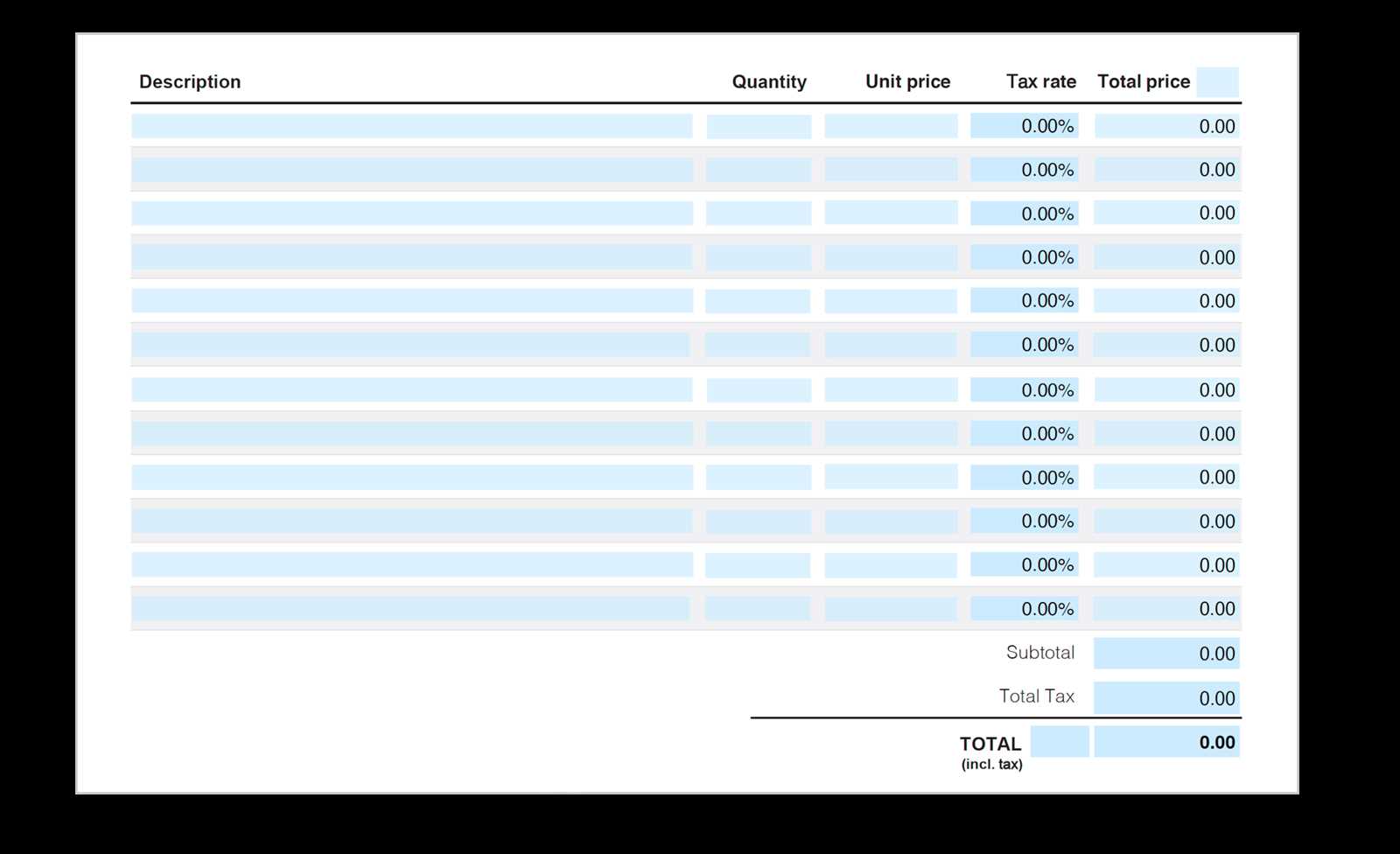
For property owners and managers, having a clear and organized way to request payments from tenants or clients is crucial. A well-structured billing document ensures that all necessary details are included, helping both parties stay on track with financial transactions. It serves as a formal request for payment, outlining services or usage details, along with the amount owed and due dates.
Customizable formats make it easy to adapt this document to various needs, whether you are managing a few properties or handling multiple agreements. These documents can be tailored to include specific terms, payment instructions, and even tax information, which helps maintain transparency and professionalism.
Utilizing a ready-made design or creating your own can save valuable time while ensuring consistency across all financial communications. By streamlining this process, you can focus more on managing your properties or business and less on administrative tasks.
What is a Rental Invoice Template
A billing document is an essential tool used to request payment for services or goods provided. It serves as an official record of the amount owed, the services rendered, and the terms of payment. This document can be customized to suit the specific needs of the sender, whether it’s for property leasing, equipment rentals, or any other service-based business.
Such a document typically includes all the necessary information to ensure clarity and professionalism. It not only details the amount due but also offers transparency on payment deadlines and any additional charges. This structured approach helps both parties track transactions and avoid confusion.
Here’s a simple breakdown of the key components usually found in a typical billing document:
| Section | Description |
|---|---|
| Contact Information | Details of the issuer and recipient, including names, addresses, and contact numbers. |
| Itemized List | Breakdown of the services provided or products used, with clear descriptions and costs. |
| Amount Due | Total amount owed, including any applicable taxes or additional charges. |
| Payment Terms | Deadline for payment, late fees, and acceptable payment methods. |
| Payment Instructions | Clear directions on how the payment should be made (e.g., bank transfer, check, online payment). |
This type of document provides a structured format that makes it easier to generate professional and accurate requests for payment, ensuring timely and correct processing of transactions.
Why Use a Rental Invoice Template
Using a structured document to request payment offers several advantages for both property owners and service providers. It simplifies the process, ensures accuracy, and fosters professionalism in financial communications. By adopting a standardized format, individuals can save time, reduce errors, and maintain consistency in their billing practices.
Time-Saving Benefits
One of the key reasons for using a pre-designed format is the time saved in creating each new document. Rather than starting from scratch with every request for payment, a ready-to-use structure allows you to quickly input relevant details and send it out. This is particularly useful for businesses that manage multiple agreements or transactions.
- Instantly generate payment requests with minimal effort.
- Reduce the time spent formatting and organizing information.
- Focus on core business tasks rather than administrative duties.
Ensuring Accuracy and Consistency
Another significant advantage is the ability to avoid mistakes. A pre-made structure helps ensure all necessary details are included, reducing the risk of missing important information. Whether it’s the payment amount, due date, or service description, everything is clearly laid out, helping you avoid confusion or disputes.
- Ensure all required fields are filled correctly every time.
- Maintain a uniform approach to billing for all clients or tenants.
- Minimize errors in totals, dates, or service descriptions.
In conclusion, utilizing a structured document simplifies the payment request process, boosts efficiency, and enhances your professionalism. This approach not only saves valuable time but also improves the overall accuracy of your financial transactions.
How to Create a Rental Invoice
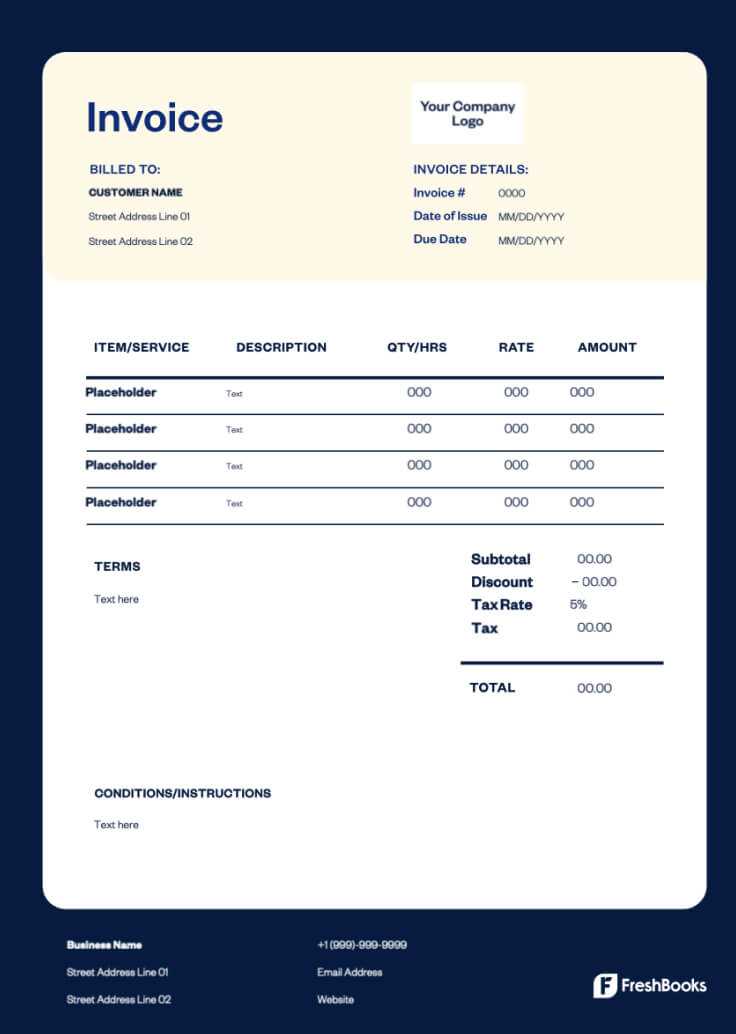
Creating a well-organized billing document involves more than just listing charges. It requires careful attention to detail and a clear structure to ensure that all relevant information is easily understood by the recipient. By following a simple set of steps, you can craft a professional and accurate request for payment every time.
The process starts with gathering essential information, such as the service or product provided, the amount due, and payment terms. Once these elements are in place, you can arrange them in a clear and logical order, ensuring that the recipient knows exactly what they are being charged for, when payment is expected, and how it should be made.
Here’s a step-by-step guide to help you create a clear and accurate billing document:
- Step 1: Include Contact Information
Start by adding both your details and those of the recipient. This typically includes names, addresses, and phone numbers or email addresses. This ensures that both parties can easily reach each other if needed. - Step 2: Provide a Clear Description of Services
List each service or product provided, including dates or time periods if applicable. Be as specific as possible to avoid confusion. - Step 3: State the Total Amount Due
Clearly show the total amount that is due, including any additional fees, taxes, or charges. Break down the charges if needed to make it easier to understand. - Step 4: Define Payment Terms
Specify the payment due date and any penalties for late payments. You may also want to include preferred payment methods or bank details. - Step 5: Add Payment Instructions
Provide clear instructions on how to make the payment, such as bank transfer details or online payment links. - Step 6: Ensure a Professional Appearance
Format your document neatly and consistently. A clean layout with easy-to-read fonts will make your request for payment look more professional.
By following these steps, you can create a precise and clear document that not only ensures timely payments but also builds trust with your clients or tenants.
Essential Information for Rental Invoices
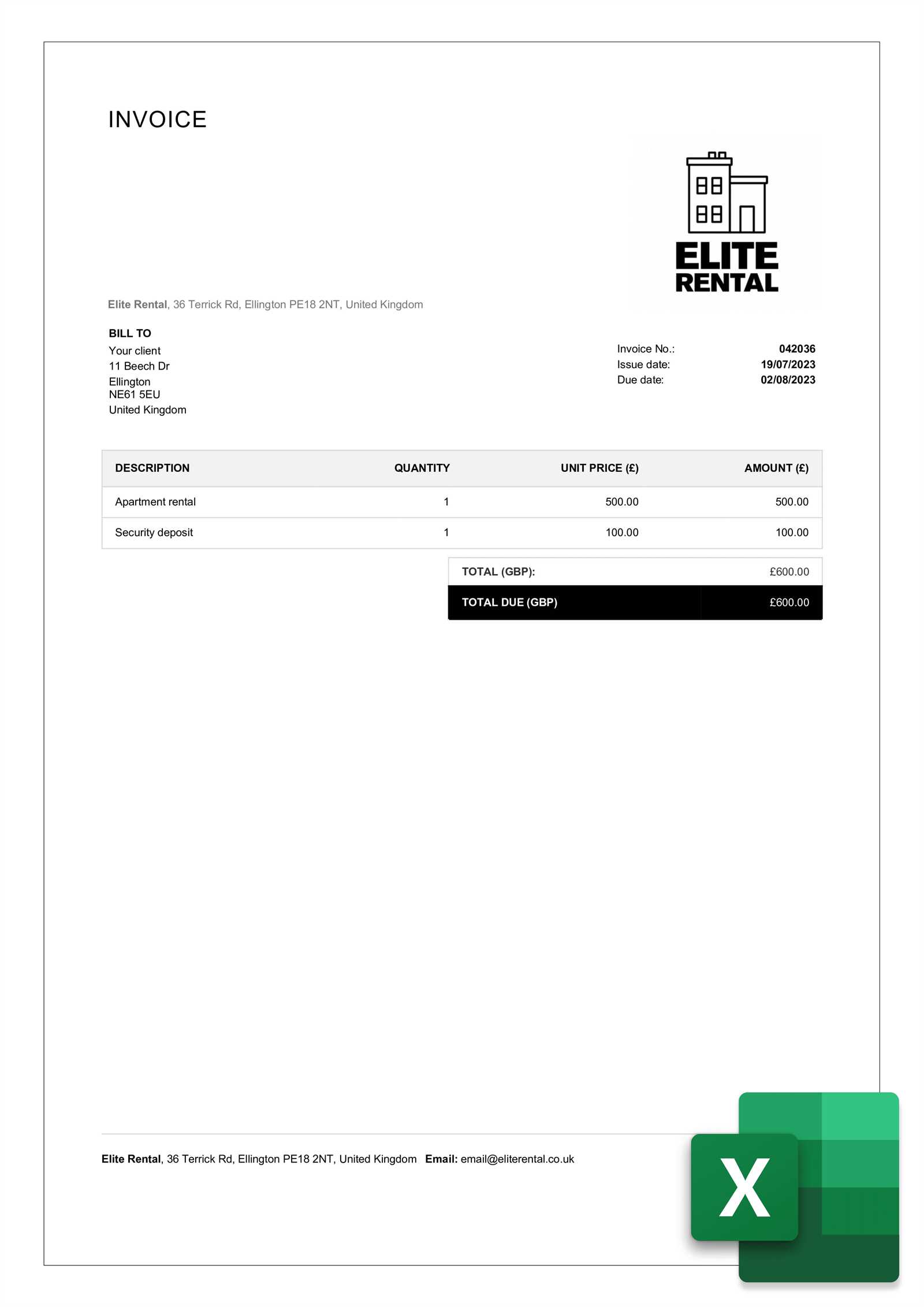
Creating a clear and effective payment request requires including several key details to ensure that both the sender and recipient understand the terms of the transaction. Each component serves to provide clarity, reduce the risk of errors, and ensure that the payment process runs smoothly. Knowing what information is necessary will help avoid confusion and ensure that all important points are addressed.
Key Elements to Include
- Contact Details: Always include your full name or business name and the recipient’s information. This ensures that both parties are easily identifiable and can be contacted if needed.
- Unique Reference Number: Assigning a unique reference number to each payment request makes it easier to track and manage multiple transactions.
- Clear Description of Services: Detail the services or items provided, including dates or time periods if applicable. This makes it clear exactly what the payment is for.
- Payment Amount: List the total amount due, including any applicable taxes, fees, or discounts. Breakdown of charges can also be helpful for transparency.
- Due Date: Include the specific date by which the payment must be made. It is also a good idea to mention any late fees or penalties if the payment is delayed.
Optional Yet Useful Information
- Payment Instructions: Provide clear instructions for how the payment should be made. This can include bank details, payment links, or other accepted methods.
- Terms and Conditions: If applicable, outline any specific terms related to the payment, such as refund policies, service agreements, or any discounts for early payment.
- Notes or Comments: Including space for additional comments or notes can help clarify any special requests or instructions for the recipient.
By including these essential details, you ensure that both you and the recipient are on the same page, leading to a smoother and more efficient payment process.
Benefits of Customizing Rental Invoice Templates
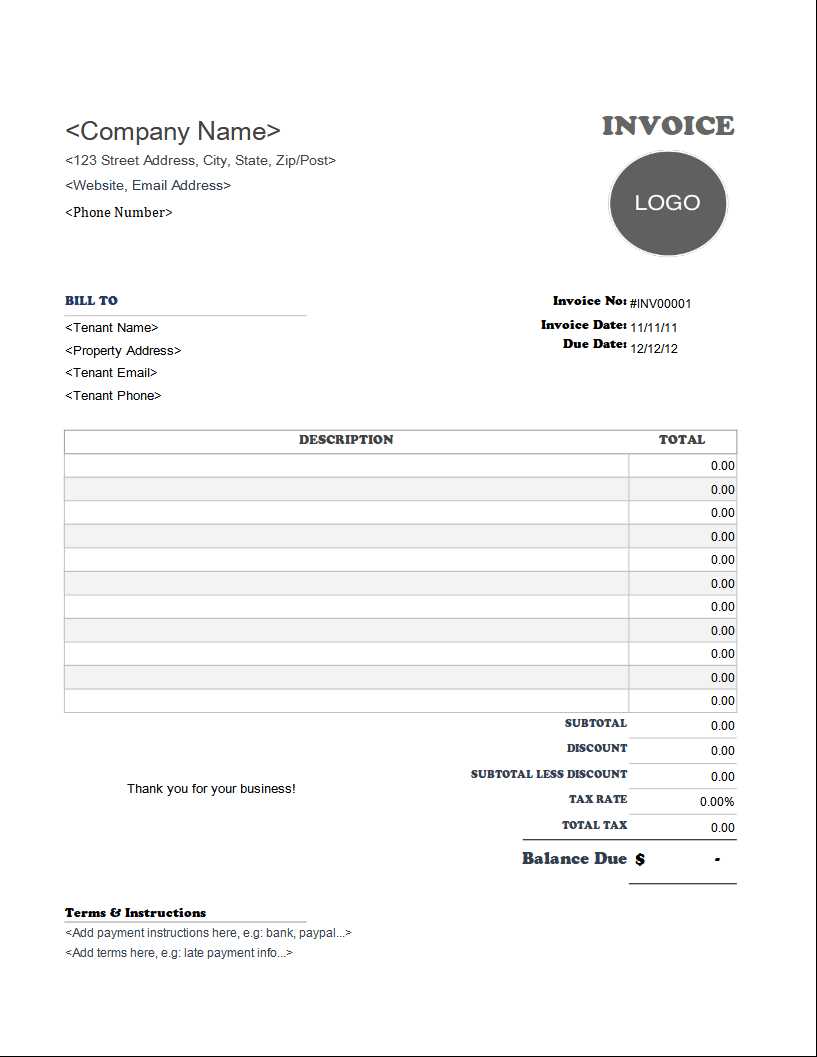
Customizing a billing document to fit the specific needs of your business or property management can provide numerous advantages. By tailoring the format to your requirements, you can ensure that all relevant information is included in a clear and professional manner. This approach not only saves time but also enhances communication and strengthens your brand’s presence.
Increased Professionalism
- Brand Consistency: Customizing your documents allows you to incorporate your logo, brand colors, and fonts, helping to reinforce your brand’s identity in every transaction.
- Clear Communication: A personalized format ensures that all the details are presented in a way that aligns with your business practices, making it easier for clients or tenants to understand.
- Personalized Experience: By customizing your document, you can include specific terms, conditions, or notes that cater to individual agreements, demonstrating professionalism and attention to detail.
Efficiency and Time-Saving
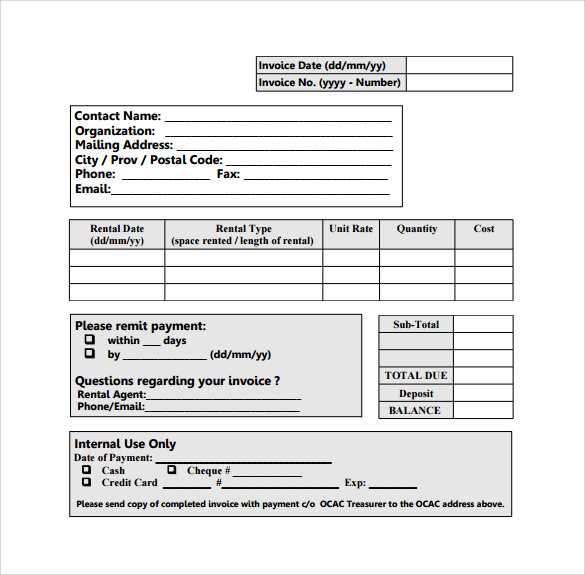
- Predefined Fields: Custom documents allow you to set up predefined fields for information such as service descriptions, amounts due, and payment details. This reduces the time spent entering the same data repeatedly.
- Quick Generation: Once your format is set up, generating new billing documents becomes faster and more efficient, helping you focus on other essential business tasks.
- Fewer Errors: Standardized fields and pre-set formats help reduce the chances of missing important information or making mistakes when creating a document.
Improved Tracking and Management
- Easy Record-Keeping: Customizing your documents can include sections for tracking previous payments or outstanding balances, simplifying your financial record management.
- Better Organization: A consistent format helps you organize your financial records more effectively, making it easier to locate and manage past transactions.
- Customized Reporting: Tailored documents can be designed to easily integrate with accounting or reporting systems, making it simpler to generate summaries or reports based on specific criteria.
Overall, customizing your billing documents not only saves time but also improves your ability to present clear, professional, and consistent communication, which can contribute to a more successful business operation.
Free Rental Invoice Templates Available Online
For individuals and businesses looking to simplify their payment requests, there are numerous free resources available online. These pre-designed documents offer a quick and convenient way to generate professional billing statements without having to start from scratch. By using these free options, you can save both time and money while ensuring your communications are clear and effective.
Advantages of Using Free Online Options
- Cost-Effective: Free options provide a no-cost solution for creating professional documents, which is especially beneficial for small businesses or individuals with limited budgets.
- Easy Access: These documents are easily accessible from various websites, often allowing instant downloads or customization online.
- Variety of Designs: Many free options come in different styles and formats, giving you the flexibility to choose one that best fits your needs and business image.
How to Choose the Right Free Option
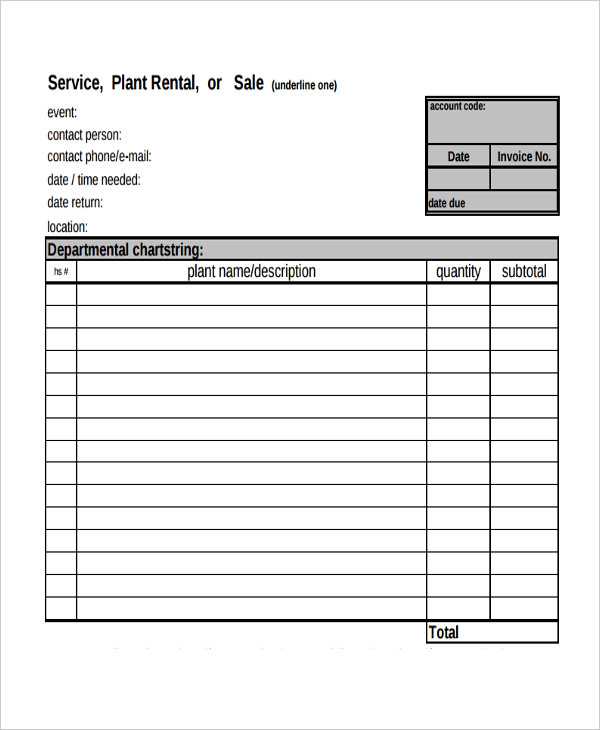
- Customization Options: Look for designs that allow you to customize the fields and layout to match your specific requirements, such as adding logos or changing payment instructions.
- User-Friendly: Select a format that is easy to navigate and edit, ensuring that you can quickly input your details without confusion.
- Compatibility: Make sure the document is compatible with your software (e.g., Microsoft Word, Excel, or PDF) for easy editing and sharing.
By taking advantage of these free resources, you can streamline your billing process and ensure you are sending out clear, professional payment requests without any added expense or complexity.
Common Mistakes to Avoid in Rental Invoices
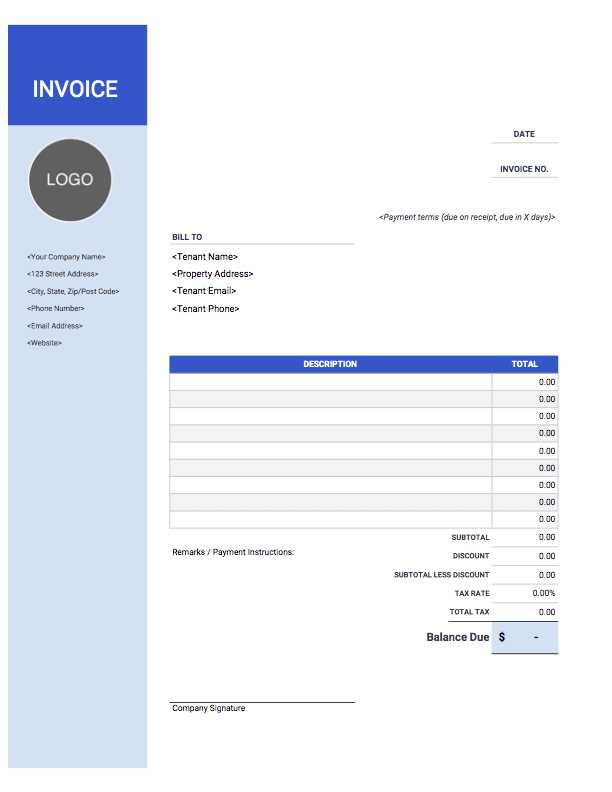
Creating a payment request may seem straightforward, but there are several common errors that can lead to confusion or delayed payments. These mistakes can undermine your professionalism, cause unnecessary back-and-forth with clients or tenants, and even result in missed payments. By being aware of these pitfalls, you can ensure that your billing documents are clear, accurate, and effective.
1. Missing or Incorrect Contact Information
One of the simplest yet most common mistakes is leaving out important contact details. Both your contact information and that of the recipient should be clearly listed to avoid any confusion or difficulties in communication.
- Double-check addresses, phone numbers, and emails. Missing or incorrect information can delay the process if the recipient has trouble reaching you.
- Ensure accurate details for both parties. This includes names, addresses, and any other relevant identifiers.
2. Unclear or Incomplete Service Descriptions
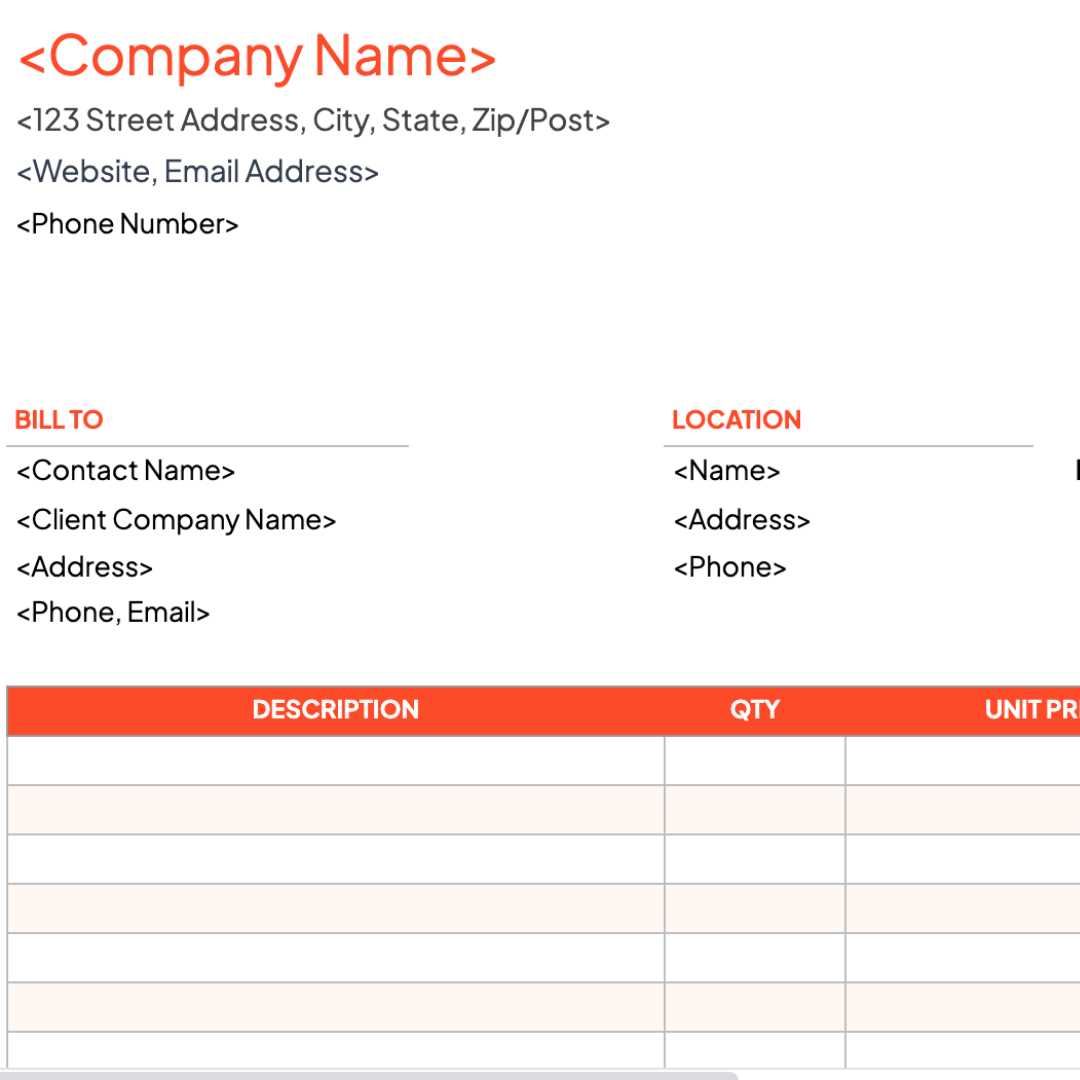
Vague or incomplete descriptions of services or products can lead to misunderstandings or disputes. Be as specific as possible when listing what is being charged for, including dates, quantities, and other relevant details.
- Provide clear breakdowns of each charge. Avoid using general terms that could be interpreted differently by the recipient.
- Include dates or time frames for services rendered. If applicable, state the start and end dates to prevent any confusion about the billing period.
3. Incorrect or Missing Payment Information
Failing to clearly state the amount due or how payment should be made can result in delays or even missed payments. It’s important to provide an accurate breakdown of the total amount and to specify payment methods clearly.
- Ensure the total amount is accurate. Double-check for any additional fees or discounts that should be included.
- Specify acceptable payment methods. Whether you prefer bank transfers, checks, or online payments, make sure this information is clearly stated.
- Set a clear due date. Avoid leaving payment terms ambiguous. Include any penalties for late payments if relevant.
4. Lack of Professional Formatting
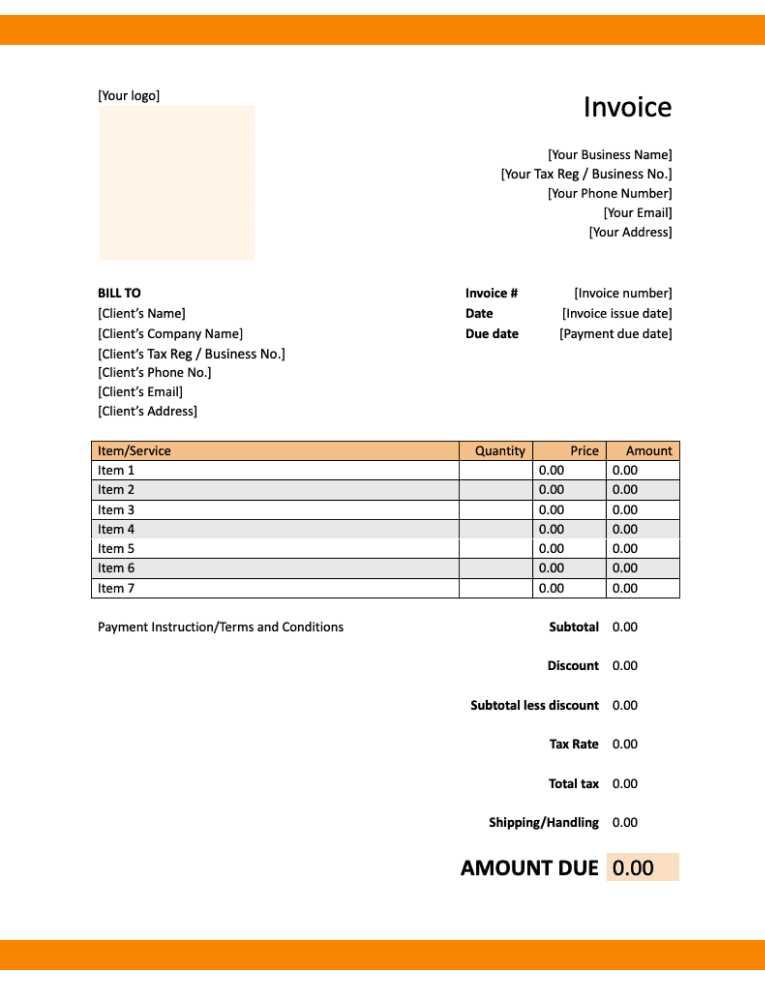
The appearance of your payment request can impact how seriously it is taken. Sloppy formatting or poor organization can make it harder for the recipient to find the necessary details quickly, and it may come across as unprofessional.
- Use a clean and consistent layout. Keep fonts legible, align text properly, and maintain a logical flow of information.
- Include all key sections in a clear order. From contact information to payment terms, make sure everything is easy to follow.
5. Not Accounting for Local Taxes or Fees
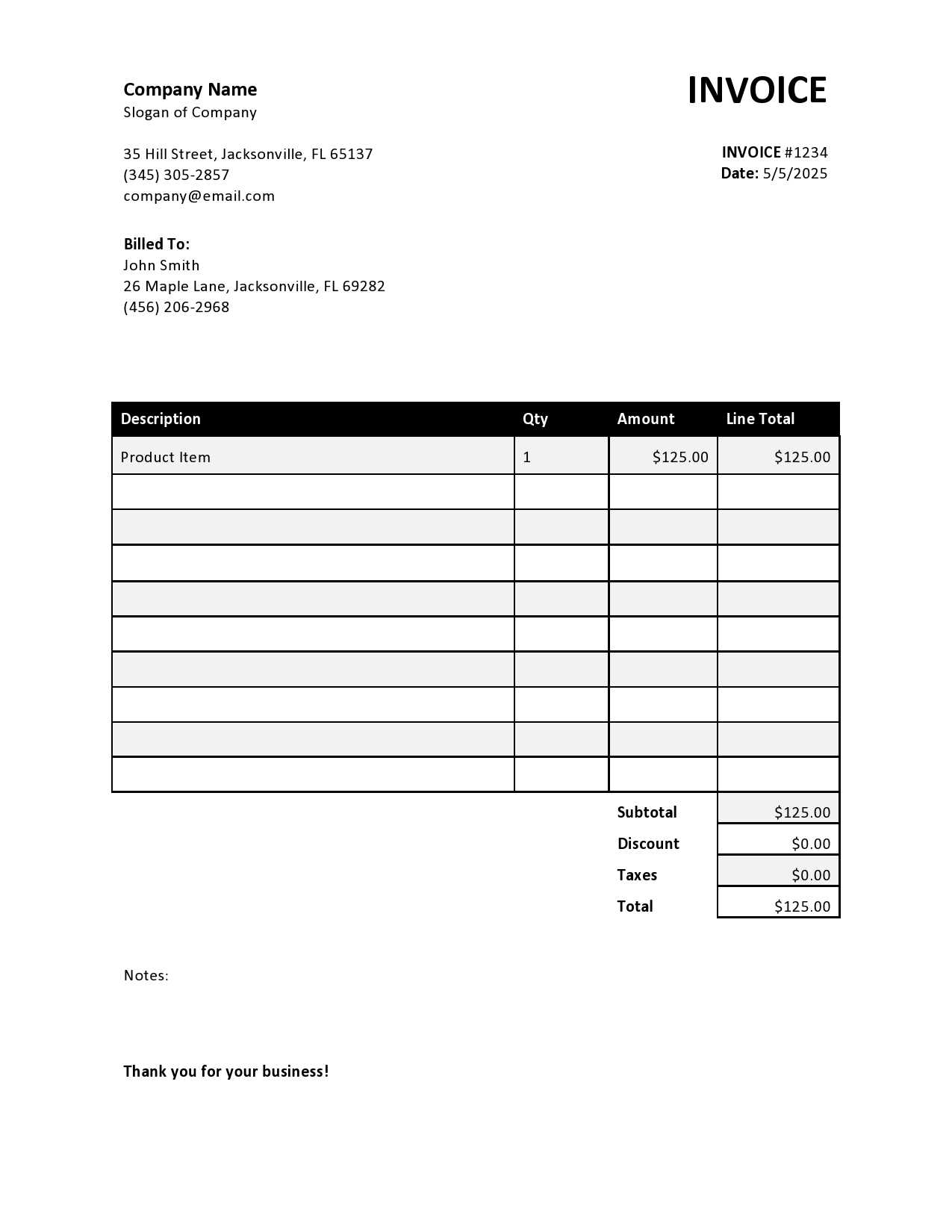
Neglecting to include taxes or other applicable fees can lead to unexpected costs for the recipient or confusion about the final amount due. Always ensure that taxes and additional charges are correctly accounted for and clearly outlined.
- Include any local taxes or service charges. Specify them separately so the recipient understands what each charge is for.
- Be transparent about extra fees. If there are additional costs (such as late fees or handling charges), make sure these are clearly stated.
Avoiding these common mistakes will help you maintain clear, professional, and effective communication with your clients or tenants. Ensuring that all necessary details are correct and easy to understand will lead to smoother transactions and fewer complications down the line.
How Rental Invoices Improve Payment Accuracy
Using a clear and structured payment request significantly reduces the chances of errors, ensuring both parties are aligned on the terms of the transaction. When all necessary details are included in a consistent format, it becomes easier to verify the amounts owed and to track payments. This leads to fewer misunderstandings, faster processing, and ultimately more accurate payments.
Clarity in Financial Details
A well-organized document provides transparency in the amounts charged, helping recipients understand exactly what they are paying for. By breaking down services, fees, taxes, and due amounts into clear, easy-to-read sections, confusion is minimized. When clients or tenants have all the information they need, they are more likely to make the correct payment without delays.
- Itemized Charges: Breaking down the costs helps both parties see the exact value of services or goods provided, reducing the risk of disputes over pricing.
- Clear Payment Instructions: Including precise payment methods and deadlines ensures that recipients know how to pay and by when, improving the likelihood of timely, accurate payments.
Consistency in Record Keeping
Standardized documents help maintain consistency across all transactions. When using a familiar format, there is less room for human error in entering payment details. Consistent record-keeping enables easier tracking of payments, which helps identify any discrepancies early on. This also simplifies the process of cross-referencing payments with the corresponding agreements or services provided.
- Pre-Formatted Fields: Pre-set fields for information such as amounts, dates, and payment instructions help avoid accidental omissions or mistakes.
- Improved Tracking: Consistent formats allow businesses or property managers to quickly compare and reconcile accounts, ensuring all payments are correctly applied.
By adopting a well-structured payment request format, both parties can ensure greater accuracy in the payment process, reduce errors, and promote smoother financial interactions.
Choosing the Right Rental Invoice Format
Selecting the appropriate format for a billing document is crucial for ensuring clarity, professionalism, and efficiency in financial transactions. The right format can make it easier for both you and the recipient to understand the details of the payment request, while also helping you maintain consistency across all your documents. Whether you need a simple layout or a more detailed one, choosing the right design will streamline the entire billing process.
When determining the ideal format, consider factors such as the type of service or product provided, the complexity of the payment structure, and your preferred level of customization. Some formats may be better suited for straightforward transactions, while others may offer more flexibility for including multiple charges or special conditions.
Additionally, it’s important to think about the medium through which the document will be sent–whether digitally or in paper form–as this may influence the layout and formatting choices. The more user-friendly and organized your document is, the less likely you are to encounter issues with unclear charges or delayed payments.
How to Include Taxes in Rental Invoices
Including taxes correctly in a payment request is essential for transparency and compliance with local laws. Properly accounting for taxes ensures that both parties understand the total amount due and prevents confusion or errors during the payment process. When creating a billing document, it’s important to clearly outline the tax rate, the amount charged, and how it affects the final payment.
Steps to Include Taxes Correctly
- Identify Applicable Tax Rates: Before calculating the tax, determine the appropriate rate based on your location and the nature of the service or product. Tax rates may vary depending on the region or type of transaction.
- Calculate the Tax Amount: Multiply the taxable amount by the applicable tax rate to find the tax due. This will be added to the total amount.
- Clearly Display Tax Details: On the billing document, clearly show the tax rate, the tax amount, and the total due after taxes.
Example of Tax Calculation in a Billing Document
| Description | Amount |
|---|---|
| Service or Product Charge | $100.00 |
| Tax (8%) | $8.00 |
| Total Amount Due | $108.00 |
By including taxes in this clear and straightforward manner, you ensure that both you and the recipient are on the same page regarding the final amount due. This helps prevent misunderstandings and ensures timely payments while maintaining compliance with tax regulations.
Professional Design Tips for Rental Invoices
When creating a payment request, the design plays a critical role in conveying professionalism and clarity. A well-designed document not only makes it easier for the recipient to understand the details but also reflects the quality and reliability of your business. Here are several tips to enhance the design of your billing statements, ensuring that they look polished and are easy to read.
Key Design Principles
- Keep It Simple and Organized: Avoid clutter by using a clean and straightforward layout. Use headings, subheadings, and bullet points to break up information and make it easier to scan.
- Use Clear Typography: Choose legible fonts for both headings and body text. Stick to one or two font styles to maintain consistency and prevent the document from looking too busy.
- Include Ample White Space: Ensure there is enough space between sections and text to make the document feel open and easy to navigate. Crowded text can make the details harder to read.
Visual Enhancements
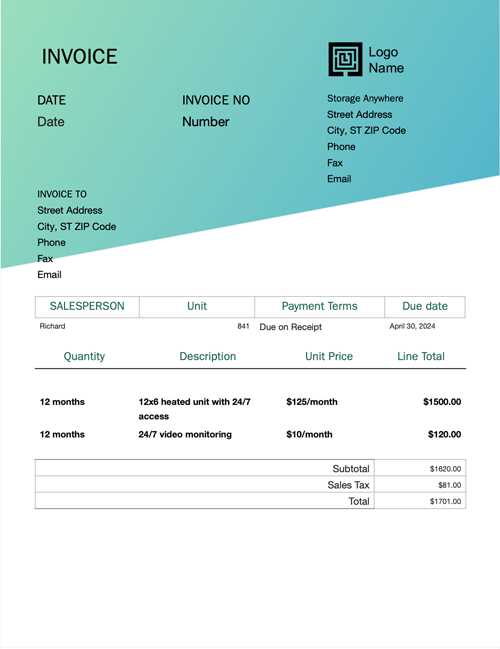
- Incorporate Your Branding: Include your logo, business name, and colors to create a branded experience that reflects your company’s identity. This adds a level of professionalism and helps make your document memorable.
- Align Content Properly: Make sure all sections and data are aligned consistently. This improves readability and creates a visually appealing flow of information.
- Use Dividers or Borders: To separate sections such as services provided, amounts due, and payment instructions, use subtle lines or borders. This helps visually distinguish different parts of the document.
Essential Information Placement
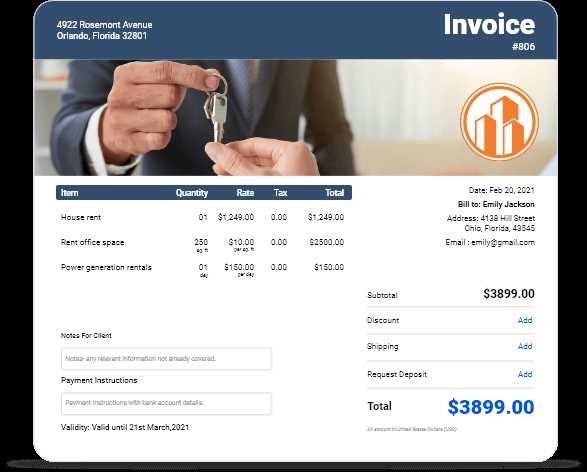
- Place Key Details at the Top: Ensure your business name, the recipient’s details, and the date are placed at the top of the page. This makes it easy to identify at a glance.
- Highlight the Total Due: Make the total amount due stand out by using bold text or larger font size. This draws attention to the most important detail on the document.
- Organize Payment Instructions Clearly: Make payment methods and instructions easy to locate. This avoids confusion about how and where payments should be made.
By following these design tips, you can create a polished, professional billing document that not only looks great but also ensures clarity and effectiveness in your communications. A well-designed document promotes your brand while making the payment process easier for both parties.
Rental Invoice vs Standard Invoice Differences
Though both types of payment requests serve the same fundamental purpose–requesting payment for goods or services–there are distinct differences in their structure and content. Understanding these differences can help ensure that you choose the correct format for your needs, depending on the type of transaction or industry you’re working in. The main differences often lie in the type of information included, as well as the specific terms tailored to the service being provided.
Key Differences in Structure
- Service Description: A specialized payment request for property-related services often includes detailed descriptions of rental periods, property addresses, and specific terms, while a standard form may list general goods or services provided.
- Payment Terms: The rental version typically includes clauses like late fees, security deposits, and payment due dates based on recurring terms, whereas standard documents are more focused on one-time charges or purchases.
- Recurring Charges: Rent-related requests may show ongoing charges, like monthly or yearly fees, while standard documents usually reflect one-time payments for a particular product or service.
Additional Considerations
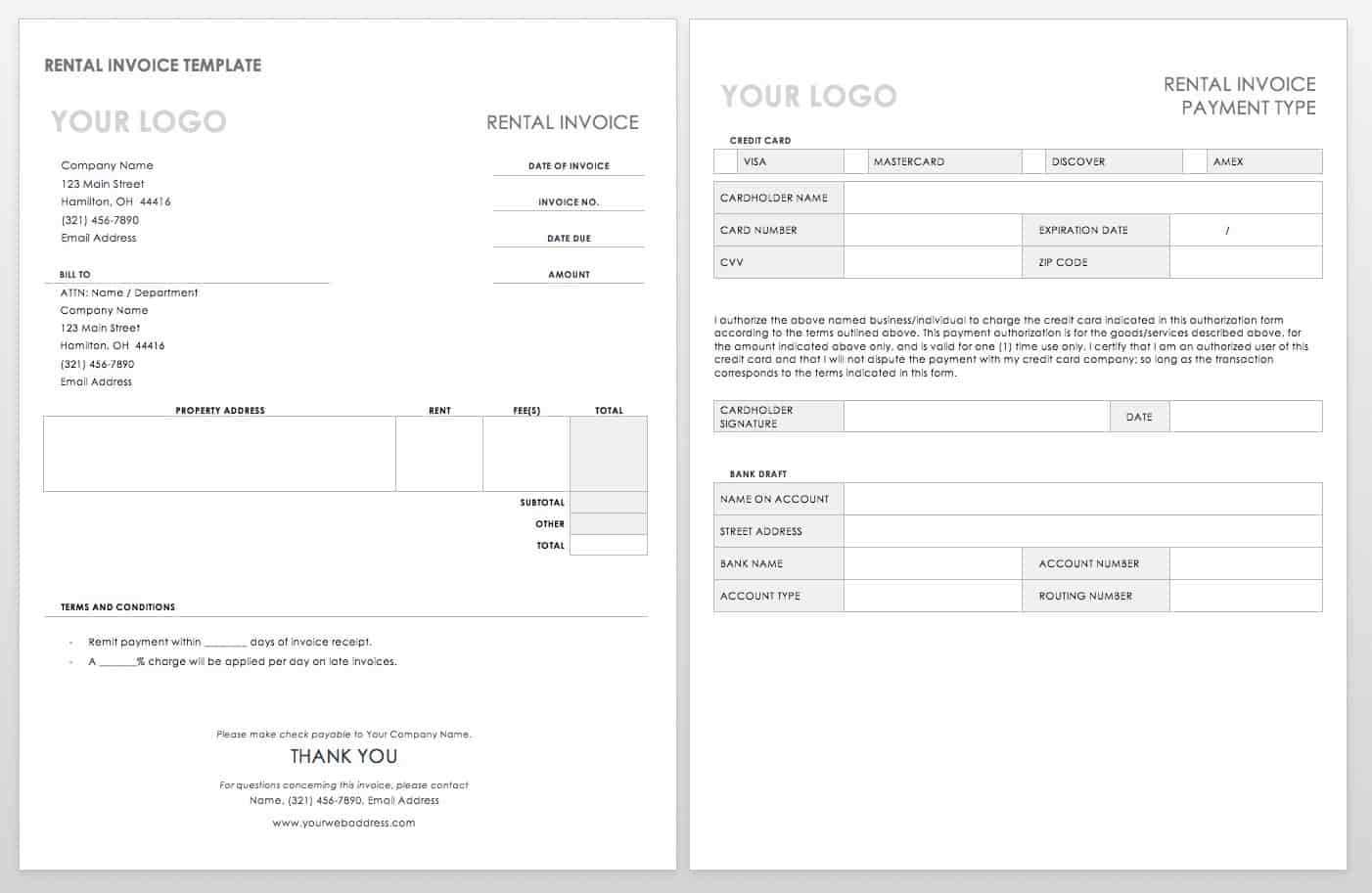
- Legal Clauses: Rental-related requests often contain legal terms specific to tenancy agreements, such as lease terms or insurance requirements, which are not typically seen in general billing documents.
- Itemization of Charges: A rental request may include separate line items for various charges like utilities, maintenance fees, or rent, which could be less detailed in standard forms.
While both types of documents have a similar purpose, the information they contain varies based on the nature of the transaction. Choosing the right format ensures clarity and appropriate handling of payments and terms.
How to Send Rental Invoices to Clients
Sending a payment request to clients involves more than just providing the necessary details; it’s important to choose the right method and ensure that the recipient receives all the information in a timely and organized manner. Proper communication of the payment terms ensures clarity and helps build trust with clients. Whether you’re using digital or physical delivery methods, following a streamlined approach will reduce the chances of delays and disputes.
Choosing the Right Delivery Method
There are several ways to send a billing document, each with its own advantages. The method you choose may depend on client preferences, your business model, and whether you want to expedite the payment process.
- Email: One of the most efficient methods is sending the document via email. It allows you to attach the document as a PDF or Word file, ensuring it is easily accessible and can be saved or printed by the recipient.
- Online Platforms: If your business uses an online payment system or platform, you can upload the document directly through the system, where clients can view and pay securely.
- Mail: For clients who prefer physical copies, mailing the document might be a better option. This ensures that the client receives a formal document, although it may take more time to process the payment.
Best Practices for Sending Payment Requests
- Ensure Accurate Information: Before sending, double-check all details, including the amounts, due dates, and payment instructions. Any mistakes could delay the payment or lead to confusion.
- Provide Clear Instructions: Whether via email or physical mail, make sure the recipient understands how to submit payment. Include clear instructions on acceptable payment methods and where to send the money.
- Send a Reminder: If payment is not received by the due date, consider sending a polite reminder. Many systems allow you to automate these follow-up emails, which helps maintain professionalism without manual effort.
By using the right delivery method and ensuring clear communication, you can streamline the payment process and avoid unnecessary delays, making the experience more efficient for both you and your clients.
Tracking Payments with Rental Invoices
Keeping track of payments is a vital part of maintaining financial clarity and ensuring timely compensation for services rendered. When sending billing documents to clients, it’s essential to have a reliable system in place to monitor when payments are made, identify outstanding balances, and handle overdue amounts. Effective payment tracking reduces errors, improves cash flow management, and ensures that all transactions are accurately recorded.
One of the most important aspects of tracking payments is to create a clear record of the payment terms and any follow-up actions required. By ensuring that each document is easily trackable, you can quickly verify which clients have paid and which still owe amounts. This can be done manually or through automated systems that update payment status once a transaction is processed.
Utilizing tools such as spreadsheets, accounting software, or online payment platforms allows for efficient tracking, enabling you to generate reports, send reminders, and identify any discrepancies in payments without confusion.
When to Issue a Rental Invoice
Knowing the right time to issue a payment request is crucial for maintaining a smooth financial flow. Timing can impact cash flow, client satisfaction, and the overall effectiveness of your billing process. The key is to align the document issuance with the completion of a service or the fulfillment of a contractual obligation. By doing so, you ensure clarity and timely payment without confusion or delays.
When to Issue Based on Service Type
- At the Start of a Rental Period: For recurring services, such as leasing, it’s common to issue a document at the beginning of the agreed-upon period, outlining the terms and payment expectations.
- Upon Completion of Service: If services are provided on a one-time basis, issue the document after the service is completed or the goods are delivered, ensuring that the client is billed for exactly what was provided.
- On a Monthly or Periodic Schedule: In cases where regular payments are required, it’s advisable to issue a request at the beginning or end of each billing cycle, such as monthly, quarterly, or annually, depending on the terms of the agreement.
Best Practices for Timing
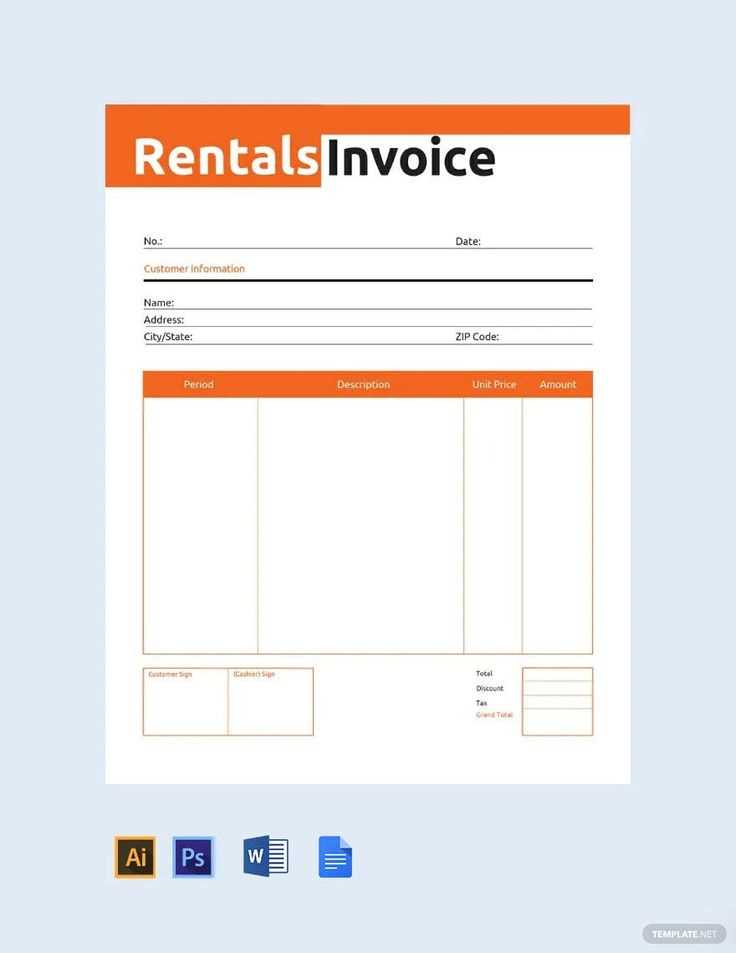
- Timely Issuance: Send the document promptly after the service has been rendered to avoid delays in payment and maintain consistency in your records.
- Align With Payment Terms: Be sure that the timing aligns with the terms outlined in your agreement. If the payment is due within a specific timeframe (e.g., within 30 days), issue the request accordingly.
- Provide Adequate Notice: Give clients enough time to process the payment, especially if the document contains significant charges or if payment must be made via a method that requires additional time (e.g., checks or bank transfers).
By ensuring the correct timing of your payment requests, you can foster positive relationships with clients while ensuring that your business remains financially healthy and well-organized.